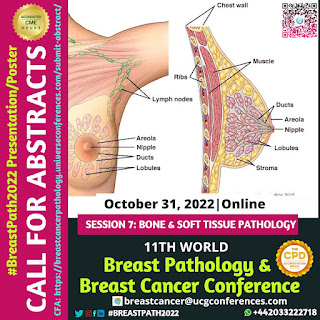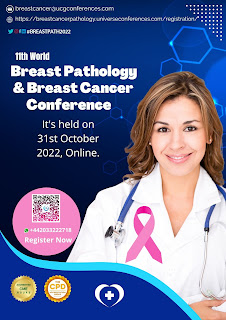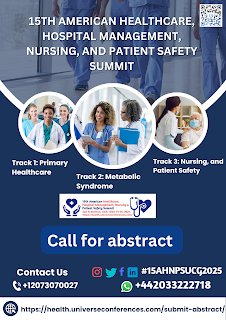Bone and Soft Tissue Pathology:-
Bone and Soft
Tissue Pathology:-
Introduction:-
The study of neoplastic and non-neoplastic diseases of the
soft tissues, including muscle, adipose tissue, tendons, fascia, and connective
tissues, is the focus of the surgical pathology specialist known as soft tissue
pathology. It can be difficult for a pathologist to make a firm diagnosis of
many soft tissue cancers using only gross inspection and microscopy; therefore,
additional tools such immunohistochemistry, electron microscopy, and molecular
pathology procedures are occasionally used.
Pathologists at Massachusetts General Hospital as well as
those in other parts of the United States and abroad can receive diagnostic
assistance from the Division of Bone and Soft Tissue Pathology. Fellows
educated by this organisation typically go on to become academic pathologists
or specialists in large community hospitals with active orthopaedic and cancer
services. Since 1986, the group's primary research initiatives have been on the
clinicopathologic characteristics of numerous malignant diseases that affect
the bones and soft tissues. The Radiology, Orthopaedics, Medical Oncology, and
Medical Oncology departments at Mass General have worked with us on some of
this work. The team is currently extending its research into the molecular
genetics of malignancies of the soft tissue and bone.
The division at Mass General is an important component of
the Connective Tissue Oncology Group, a multidisciplinary group of doctors
devoted to the care of Mass General patients with cancers of the soft tissue
and bone. We are moreover associates of the Brigham and Women's
Hospital-affiliated Mass General Brigham Connective Tissue Oncology Group.
Therapeutic Program:-
4700 surgical specimens are provided as part of the service
annually. About 20% of these cases involve benign and malignant neoplasms, with
the remaining cases including a range of illnesses such arthritis, infection,
metabolic abnormalities, mechanical issues, circulatory malfunction, and
trauma. In addition to traditional light microscopy, many neoplasms need to be
evaluated using complicated techniques such immunohistochemistry, electron
microscopy, cytogenetics, FISH, and PCR.
One of the most frequent users of molecular genetics,
electron microscopy, and immunohistochemistry is the service. Many private consult
cases that are requested by pathologists and surgeons from across the United
States and many international nations are not included in the volume of cases
at Mass General.
Achievements in Education and
Research:-
Brain Base Tumours:-
The division examines more surgical samples from tumours at
the base of the skull than any other facility. Due to the department of
radiation oncology's accessibility to proton beam radiation, which draws
patients from all over the world, there are a lot of referrals.
Chondrosarcomas and chordomas make up the bulk of skull base
tumours. The division has formally defined the morphology of these tumours in
relation to their immunoprofile and prognosis in a number of studies.
Importantly, these investigations have revealed that 37% of chordomas and
chondrosarcomas receive the incorrect diagnosis at non-government facilities.
When myxoid chondrosarcoma is misclassified as a chordoma, the majority of
errors can be avoided by undergoing immunohistochemistry.
The identification of certain benign bone tumours that can
be mistaken pathologically for chondrosarcomas, called chordomas, and the
description of variants of chordomas that can be mistaken for benign processes
are two more significant morphologic studies relevant to therapy and prognosis.
We recently published a sizable collection of paediatric
chordomas, and we are currently examining a subgroup of kids with severe skull
base chordomas.
We are investigating chordomas and precursor lesions in
ferrets right now, and we just finished a comparative genomic hybridization
investigation into chordomas.
Conclusion:-
Neoplasms and other pathological conditions that affect the
skeletal system and many non-epithelial extraskeletal tissues, such as fibrous
and adipose tissue, skeletal muscle, vessels, and peripheral nerves, are dealt
with by the Bone and Soft Tissue Pathology Unit of the Department of Pathology
and Cell Biology.
The analysis of a specimen's macroscopic and microscopic
features is a part of the diagnostic process, but it is not the only one. In
some circumstances, specialised methods like immunohistochemistry,
cytogenetics, and molecular pathology are used to confirm the diagnosis.
Surgeons, oncologists, and radiologists can also offer additional knowledge and
experience.
Pathological and neoplastic disorders of the bone and soft
tissue are quite uncommon, so it's crucial that a specialist who is familiar
with their characteristics and biological potential makes the diagnosis.
Contact Us:-
Reach out to us: https://breastcancerpathology.universeconferences.com/
Mail: pathology@universeconferences.com| info@utilitarianconferences.com |
breastcancer@ucgconferences.com
Whatsapp: +442033222718 Call: +12073070027
Previous Blog Post Links:-
|
·
https://www.linkedin.com/pulse/breast-cancer-pathology-dr-priya-pujhari |



.png)


Comments
Post a Comment